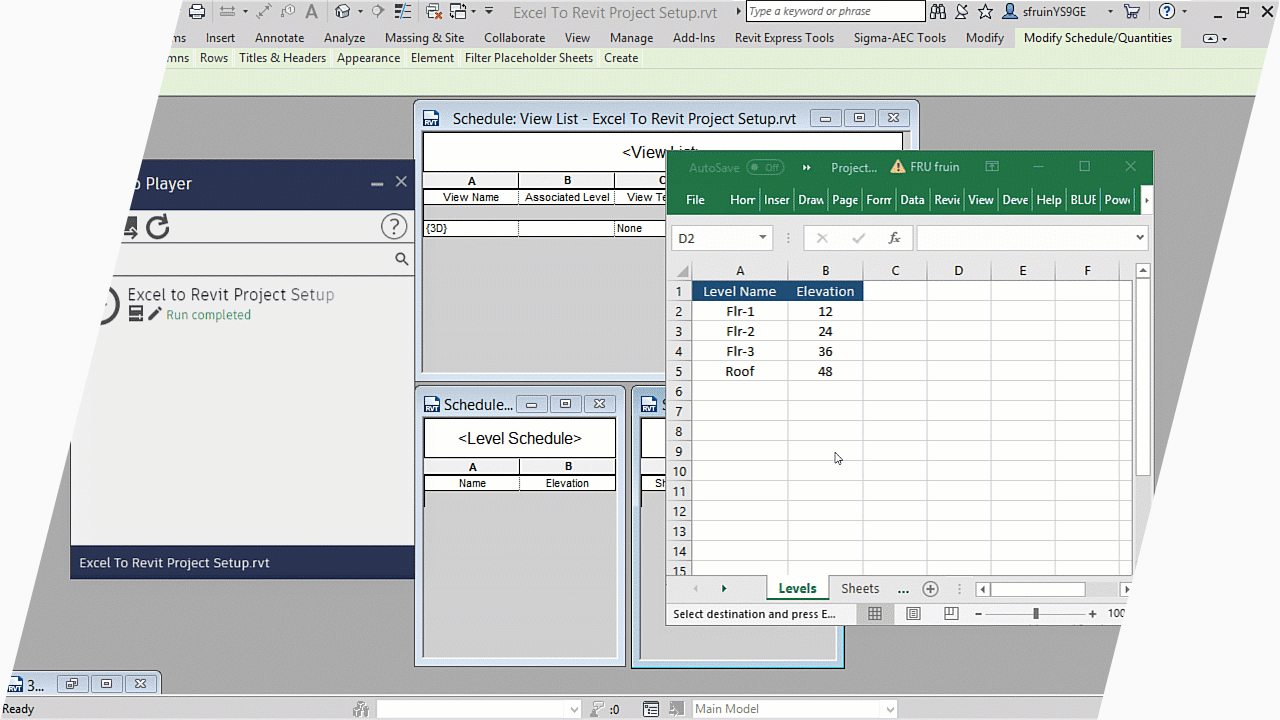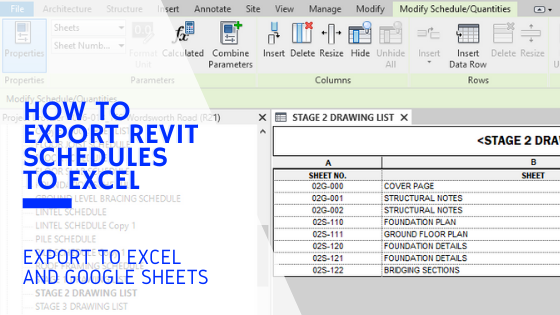Revit Plugins and Tools: Enhancing Your BIM Experience
Wiki Article
Excel Empowerment: Supercharge Your Revit Projects With Seamless Information Import
Are you seeking to supercharge your Revit tasks? With seamless information import, Excel empowerment can be the secret to unlocking your job's full capacity. Think of streamlining the import procedure and taking full advantage of efficiency through smooth information combination. In this write-up, we will share tips and methods for making use of Master your Revit tasks. Discover how using the Excel-Revit link can result in success in your tasks. Prepare yourself to take your Revit jobs to the following level with Excel empowerment.The Power of Master Revit Projects
You can supercharge your Revit tasks by using the power of Excel for seamless data import. Excel is a versatile device that can considerably improve your workflow and efficiency in Revit (import excel into revit). With Excel, you can easily import and take care of large amounts of data, saving you effort and timeOne of the crucial advantages of utilizing Master Revit is its capacity to handle complicated calculations and solutions. You can make use of Excel to execute estimations on your data, such as producing amounts, calculating expenses, or evaluating performance. This can be specifically valuable when dealing with huge tasks that call for considerable estimations.

On top of that, Excel provides a familiar and user-friendly user interface for dealing with data. You can organize and adjust your data in a spread sheet style, making it easy to see and modify. This can be particularly practical when working together with others or when you need to make fast adjustments to your task data.
Additionally, Excel enables you to quickly import and export information in between Revit and other software program applications. You can import data from outside sources into Revit, such as product requirements or equipment timetables, and export data from Revit to Excel for additional analysis or reporting.
Streamlining Data Import With Master Revit
Improving data import in Revit ends up being easier when using Excel as a tool. With Excel, you have the power to flawlessly import and take care of big amounts of data in your Revit jobs. By using the acquainted interface and functionality of Excel, you can save time and rise performance in your process.Among the key benefits of making use of Excel for information import in Revit is the capability to quickly organize and adjust data prior to importing it into your task. With Excel's powerful attributes, such as arranging, filtering, and formulas, you can rapidly cleanse up and style your data to fulfill the requirements of your Revit job.
Moreover, Excel allows you to import information from various resources, such as databases, spread sheets, or even web-based applications. This adaptability gives you the flexibility to gather data from different systems and settle it right into one central place for very easy access and management.
Additionally, Excel provides the alternative to produce custom-made themes for information import in Revit. By developing design templates customized to your task's specific needs, you can make certain consistency and precision in your data import procedure.
General, utilizing Excel as a tool for information import in Revit enhances the procedure and improves your productivity. So why not capitalize on this powerful device and supercharge your Revit jobs with smooth data import making use of Excel?
Maximizing Performance With Seamless Information Assimilation
Make the most of efficiency by flawlessly integrating and handling data in your workflow. Gone are the days of manually inputting data into your system, wasting priceless time and sources. With smooth information assimilation, you can enhance your processes and supercharge your performance.
When you have a smooth assimilation system in area,Managing information comes to be a wind. You can quickly arrange and categorize your information, making it simpler to get and analyze. Claim goodbye to the days of exploring countless spread sheets for that piece of details you require.

Excel Tips and Tricks for Revit Projects
With these ideas and methods, you'll have the ability to effectively manage your Revit tasks making use of Excel. One of the very first things you can do is to utilize Excel's powerful sorting and filtering functions. This will certainly permit you to quickly arrange and evaluate your task data. For instance, you can sort components by their names or filter them based on specific standards, such as their status or location. Another valuable attribute is the capability to produce solutions in Excel. You can use formulas to calculate amounts, carry out complicated calculations, and also automate certain jobs. This can save you a great deal of effort and time in your Revit jobs. Additionally, you can make use of Excel to create customized design templates for information import and export. By doing this, you can make sure uniformity and accuracy when moving data in between Revit and Excel. Don't neglect regarding Excel's conditional format feature. You can use this to highlight specific components or worths based on specific problems. This can aid you swiftly determine and resolve any concerns or abnormalities in your job data. Overall, understanding these Excel ideas and techniques will substantially improve your ability to manage and adjust data in your Revit jobs.Utilizing the Excel-Revit Connection for Success
To make the many of your Excel-Revit connection, make use of the capacity to easily integrate and transfer job details. By harnessing this powerful connection, you can supercharge your Revit tasks and streamline your workflow. With just a couple of easy steps, you can import data from Excel straight right into Revit, saving you time and making certain accuracy.Among the vital advantages of the Excel-Revit link is the capability to transfer information flawlessly. Whether you are importing timetables, space data, or also geometry information, Excel provides an user-friendly interface that permits you to organize and manipulate your data prior to importing it right into Revit. This suggests you can easily update and modify your project information in Excel, and with a couple of clicks, move those adjustments straight into your Revit version.
In addition to moving information, the Excel-Revit connection also allows for synchronization. This indicates that any changes made in Excel can be instantly updated in Revit, making certain that your task details is always approximately day. This synchronization feature is specifically useful when handling large and intricate tasks, as it eliminates the requirement for hands-on data access and decreases the threat of mistakes.
Final Thought
By enhancing information import and maximizing effectiveness through smooth data integration, you can supercharge your jobs and accomplish success. Do not wait any type of longer, start harnessing the power of Excel in your Revit tasks today and unlock a globe of opportunities.You can supercharge your Revit jobs by harnessing the power of Excel for smooth data import. With Excel, you have the power to perfectly import and manage big amounts of data in your Revit projects (revit tool). Generally, mastering these Excel tricks and ideas will greatly enhance your capacity to handle and adjust information in your Revit jobs
Whether you are importing timetables, space data, or even geometry information, Excel offers a straightforward interface that allows you to arrange and manipulate your data prior to importing it into Revit. By improving data import and making the most of efficiency via seamless data assimilation, you can supercharge your tasks and achieve success.
Report this wiki page